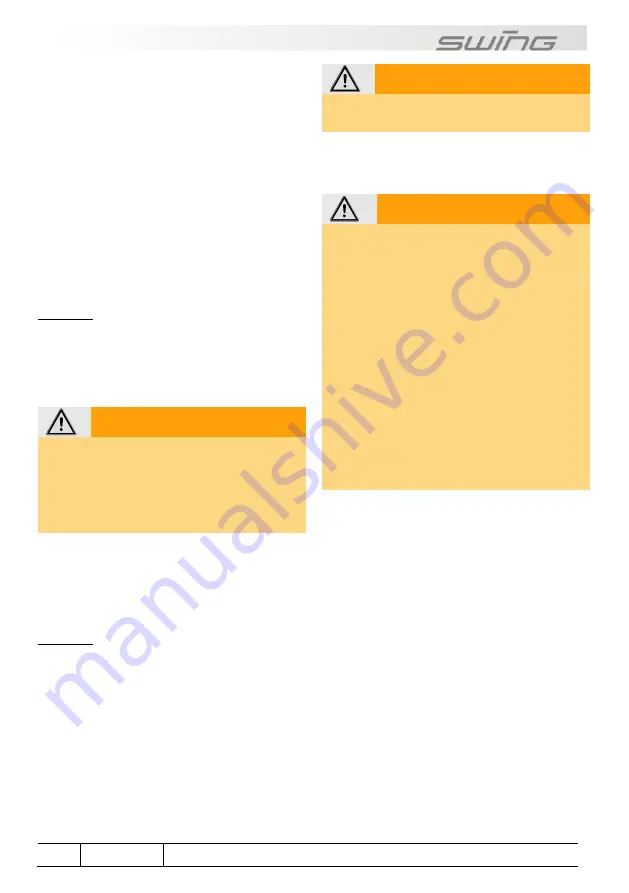
28
Section 07
Dangerous situations and extreme flying
Full stall
With a full stall, the lift-generating airflow over
the glider breaks away completely or nearly
completely.
It is triggered when the maximum possible
angle of attack is exceeded. The most common
cause is going below the minimum speed or
flying near the minimum speed combined with
the effects of turbulence.
In full stall, the paraglider loses its forwards
travel, surges backwards and deflates. If the
brakes are held down, the canopy comes up
over the pilot again. The result is an almost
vertical descent with a sink rate of approx.
8m/s.
Recovery
Fully release the brakes within 3 seconds (count
21, 22, 23). If the brakes are released too
slowly, the paraglider may spin. The spin stops
automatically when the brakes are released
completely.
Spin
The spin is a stable flight attitude, in which one
side of the canopy stalls, while the other side
continues to fly forward. The glider turns around
the stalled side of the wing.
Recovery
To recover from the spin, the pilot must quickly
release the brakes. The stalled side of the wing
will then speed up again. Depending on recovery
and the dynamic of the circular motion, one side
of the canopy may shoot forwards and suffer an
asymmetric collapse. If the pilot suspects that
the glider has unintentionally been put into a
spin, the brake which has been pulled down too
far must be released immediately.
WARNING
If the spin does not stop, check whether you
have released the brakes fully!
Other tips for dangerous situations
Stalling in rain
WARNING
Flying in extremely humid weather or in rain
is outside of the operating limits of the glider.
If you are not able to avoid flying in rain,
please observe the following:
it is advisable to fly with slight
acceleration during and after the rain
(min. 30% or more)
use no brake input or as little as possible
do not use big ears
control travel reduces
avoid tight turns, especially in the final
approach. If conditions allow, you should
also fly slightly accelerated in this phase
avoid large angles of attack and the
possible early stall near the ground
(release the speed bar only slowly)
In general, there are two reasons why a
paraglider may go into deep stall in rain:
1. The first risk lies in the fact that the canopy
weight increases if a glider is flown in rain for
any length of time. The centre of gravity and
angle of attack then shift, which can result in
airflow separation/stall. It is relevant here that
if a glider absorbs more water (as older gliders
do because they lose their water-repellent
coating over time) and is closer to the deep stall
limit because of its design and age, less water
absorption and thus weight increase will put the
glider into deep stall.
2. When there is rain, there can be so many
water droplets on the top surface of a glider
that almost the entire upper surface is affected
but, even so, the drops “bead” so the surface is
not wet through. This makes the top surface so
“rough” in texture from the drop formation that
the airflow over the top of the wing separates
from the surface. This phenomenon has been
known for some time from hang-gliding and
WARNING
If the canopy has gone back during the full
stall, the brakes must be held down,
otherwise the canopy may surge forward
and, in an extreme case, end up underneath
the pilot. Hold the brakes down until the
canopy is above you again.








































